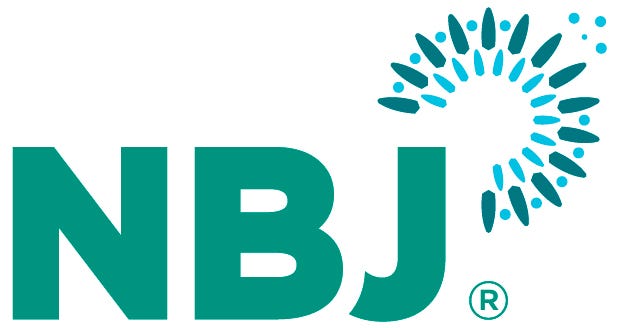
DNA study behind 2015 herbs and botanicals investigation retractedDNA study behind 2015 herbs and botanicals investigation retracted
The supplement industry was shaken in 2015 by the New York Attorney General charging that herbal supplements did not contain the listed ingredients. Now, the paper that led to that investigation has been retracted. Read on for key takeaways.

Exoneration … delayed but not denied.
Two weeks ago, I read the news that the journal BMC Medicine retracted the 2013 paper by Dr. Steven G. Newmaster et al., which started the much-publicized controversy around DNA testing of botanical dietary supplements. The retraction made me reflect on how this experience has shaped the industry and what lessons we can learn moving forward.
I still remember that moment on Feb. 2, 2015, when I received a call from a New York Times reporter: "The New York attorney general is about to announce a major investigation into fraudulent dietary supplements that purportedly do not contain any of the ingredients on the label,” he said. “This will be a front-page story in tomorrow's newspaper. It implicates some of your members. Does CRN have any comment?" Of course we did—quite a few.
Those who were part of the supplement industry in 2015 remember well the weeks and months that followed, as the industry debunked the pseudo-science behind the DNA analysis, defended our manufacturing to skeptical policymakers and attorneys general from other states to contain the damage, and reassured consumers of the high quality of the products.
It all started in 2013, when a relatively unknown scientist specializing in dinosaur DNA published a paper analyzing various herbs in finished products and claiming that most of the supplements he tested did not match the DNA barcodes of the plants listed on the label. That study was reported in the New York Times, which subsequently prompted New York Attorney General Schneiderman to engage Dr. Newmaster to conduct a sting operation by examining the DNA of more than 20 popular supplements with similar findings. Manufacturers were not consulted or allowed to review the results before their release. And the damage was done.
Dr. Newmaster's supposed findings and a second New York Times article spawned months of criticism of the industry and negative headlines that "unregulated" dietary supplements were "worthless," if not "unsafe" altogether. Now, more than 10 years after it was published, Dr. Newmaster's seminal paper has been retracted, as evidence of data fabrication was discovered by the University of Guelph, and his subsequent research has likewise been called into question.
Response and reflection
You might think I'd be elated at this news, but I'm not. Yes, there is a sense of vindication. CRN's substantial efforts to counter the misinformation, to call into question the pseudo-science of looking for genetic material in extracts and powders, and to defend our members' good manufacturing practices were worthwhile and effective. The industry was the convenient scapegoat for a scientist looking to build a career, an attorney general looking to score political points and a reporter willing to publish without scrutiny what was given to him as an exclusive from the attorney general. After all this time, it's heartening to see the truth revealed.
CRN pushed back on countless reporters, consumer groups and policymakers to rebuild confidence in the marketplace. CRN's consumer data and actual market sales reflect the initial dip in trust and purchases but ultimately show the success in regaining the confidence of consumers who see the health benefits from their supplement regimens. I'm proud of CRN's immediate and sustained efforts to defend its members from wrongful attacks. And this recent vindication.
But there are still lessons to be learned from the debacle.
Memories are too short. Acting responsibly is always the best defense—and we never know when the next existential crisis will occur.
In the months following the New York Times article, retailers were jittery and afraid of their potential exposure. Industry leaders (CRN and non-CRN members) convened several meetings to explore self-regulatory responses. Among the recommendations from those discussions were proposals to help retailers create standards for assuring that products were well made and that their contents matched their labels.
From that, the Global Retailers & Manufacturers Alliance (GRMA) was born to help retailers create harmonized, industry-wide standards for GMP audits and product testing. Even after all this time, GRMA still does not enjoy universal support from brands or retailers. Despite global recognition by the Global Food Safety Institute and recognized audit requirements that conform with ANSI and NSF standards, too many retailers still pursue their unique requirements, imposing unnecessary compliance obligations on their vendors, or they don't vet the supplement brands they sell at all. The first approach weaponizes quality for the retailer’s profit, and the second ignores that this industry's low barriers to entry can attract companies who put profit ahead of quality.
Those CEO-level discussions following the New York attorney general crisis also birthed discussions of a registry of product labels, where the products' marketers would have responsibility for the contents of the registry entries and the FDA would know what products are in the market. That led to CRN's creation of the Supplement OWL, a voluntary but evolving registry, and our association's support for a mandatory listing imposed by the FDA. As time passed, the urgency that drove the industry to endorse a mandatory registry has waned. To prevent future crises, it's essential that the industry renew its support for a mandatory registry. This can be achieved through concerted advocacy and education about the benefits of such transparency measures."
A compulsory registry of supplements administered by the FDA was viewed as a responsible middle ground that would stave off more restrictive and burdensome obligations. Had the industry helped to enact mandatory listing in 2022, when Congress seriously considered it, a mandatory federal registry would have demonstrated the evolution of dietary supplement regulation and might have staved off the current crisis of age restrictions being imposed by the states. What will be the next existential threat to dietary supplements? In retrospect, will this industry's leaders regret not pursuing a moderate approach that provides transparency, when more onerous restrictions might be imposed instead?
Bad science still unduly influences the conversation—whether poorly conducted, agenda-driven or absent entirely.
As the trade association that touts itself as "the science behind the supplements," CRN pays close attention to how science influences the discussion for and against dietary supplement usage. The DNA analysis on its face appeared to be incontrovertible evidence of poor manufacturing, but the scientific flaws were evident when scrutinized.
Today, this industry faces similar challenges, and external stakeholders seem equally incapable of reviewing the research, or lack of it, with a critical eye. Denmark has banned using ashwagandha, and several other countries are questioning its safety, based on flawed data. Some European countries are re-evaluating long-established maximum safe levels for essential nutrients and proposing to lower those levels to something akin to Recommended Dietary Allowances, using the precautionary principle despite robust science establishing much higher safe levels based on risk. Several states have proposed bans on the widely used excipient titanium dioxide, based on an overabundance of caution rather than reviewing actual usage data. Even the debate in New York over age restrictions for "weight loss" and "muscle building" supplements occurs without any hard science that demonstrates these products cause or exacerbate eating disorders. The pathos of the moment and the desire to find a convenient "quick fix" can overwhelm the lack of evidence.
These examples illustrate how critical it is that industry continue to invest in and support strong scientific research, to champion reliance on science and critically evaluate new research, even if it occasionally doesn't go our way. An industry committed to "going where the science takes us" can more persuasively push back when critics and opponents misuse the data or call for restrictions without data at all. CRN recently reframed the discussion around a JAMA study on multivitamins by relying on the wealth of evidence of benefits that have been amassed in the past 20 years. Companies must continue to make constant investments in science to demonstrate their products' safety and the efficacy of their claims. Research budgets should be as integral to financial planning and future profits as marketing and sales allotments.
The organizations that support this industry are vital to protecting its future; companies need to get off the sidelines and support their work.
Educational nonprofits like the American Botanical Council and the American Herbal Pharmacopoeia and AHP were critical to evaluating Dr. Newmaster's research and raised red flags immediately about the veracity of his conclusions. CRN and other trade groups worked tirelessly to reassure retailers, investors, consumers and policymakers. At CRN, we developed a multi-pronged strategy that considered possible regulatory changes, a public relations campaign to retake the narrative with customers, an attack on the "science" underpinning the DNA results and an education effort to calm lawmakers and regulators. Eventually, the uproar died down.
Today, the industry is even more fragmented. So many companies have emerged in the last nine years that don't even remember the N.Y. attorney general affair, much less the passage of DSHEA. Many firms that have ridden the wave of consumer interest in self-care and benefited from the consumer trust this industry has built (and rebuilt) don't belong to any trade association or financially support scientific organizations. With so many voices claiming to speak for what industry wants, the cacophony confuses policymakers and frustrates collective efforts to advance our interests. I worry that we have become, in Lincoln's words, "a house divided," and vulnerable to opposing interests.
As I reflect on that fateful phone call in 2015, I wonder how the industry will respond to the next existential crisis. Such reflection is part of my job as the leader of CRN, but I'd like to think there are many CEOs among companies in this industry preparing for that exact eventuality. What lessons did we learn from that experience? Have we shored up any areas for improvement in supply chains and quality control? Have we created direct lines of communication with consumers to shape their understanding of the products? Have we exhibited the ability to self-regulate and to act responsibly, even if no one was watching? Have we doubled down on science to support the claims we make? Have we demonstrated credibility with our communities so we have the ethos to challenge authority?
We should have learned these lessons from the past nine years.
And feeling a little vindicated is OK, too.
For more industry insights, subscribe to Nutrition Business Journal.
Read more about:
IdeaXchangeAbout the Author
You May Also Like





